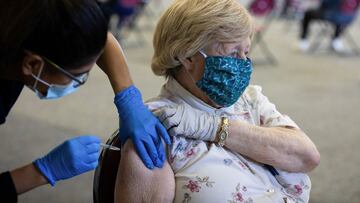Medicare vs Medicaid: what are the differences?
In the United States, there are two semi-public health insurance schemes: Medicare and Medicaid. What are the main differences between the programs?


Together, Medicare and Medicaid provide health insurance to more than 143 million people in the United States. Each program serves a specific demographic group and is funded through different state and level budget mechanisms.
Medicare
Medicare was established in 1966 by the federal government after it became evident that most seniors were uninsured. Medicare is available to seniors, regardless of income, when a person reaches sixty-five years of age. The program was expanded in the years following to provide coverage to people with disabilities as well.
There are around 63 million people who receive healthcare through Medicare. About 54 million enrolled are seniors over sixty-five, and the remaining 9 million are people with disabilities. The Congressional Research Service estimated that in 2019, the federal government spent around $836 billion on the program.
Medicare offers seniors coverage under a few distinct ‘Parts.” Broadly, Part A and B cover hospital stays, doctors, and medical appointments. Part C, which came into effect, offers Medicare beneficiaries the opportunity to buy additional coverage for dental, vision, hearing, and other specialties. Under Part C, enrolled can purchase Medicare Advantage Plans, which provide these additional benefits. Part D, which came into effect in 2006, helps beneficiaries cover the costs of prescription drugs.
Those who receive social security are automatically enrolled in Parts A and B, and the premiums are deducted from their benefit checks.
Related News
- Ex-spouses may be eligible for Social Security Benefits
- Are Medicare Advantage Plans worth it?
- Social Security Administration to announce COLA increase in mid-October
- Social Security Benefits for children
Medicaid
Medicaid is run jointly between state and federal governments to provide healthcare to low-income people. In 2021, around 82 million people, including 38 million children, were enrolled in the program. In 2019, governments spent around $627 billion to provide this coverage.
49% of people on Medicaid and CHIP are children. https://t.co/7PbrNTpzpi
— Phil Galewitz (@philgalewitz) June 21, 2021
All states, the District of Colombia, and US territories offer Medicaid, although participation is optional. To participate, the “federal government requires states to cover certain mandatory populations and services.” If states would like to offer additional services, they can -- creating a complicated and diverse landscape of plans.
The program was initially established to provide coverage “to low-income children, pregnant women, parents of dependent children, the elderly, and individuals with disabilities.” However, the Affordable Care Act allocated funding for states to expand coverage to “nonelderly adults with income up to 133% of the federal poverty level.”
After this piece of the law came into effect in 014, Medicaid enrollment increased by 8.8 percent, and in 2015 the figure increased by an additional 7.2 percent. In the years following, increases have also been seen but have changed between .07 and 3.3 percent.
The pandemic has also caused a rapid increase in enrollment, as millions lost employer-funded health insurance when they lost their job. The federal government reported a 10.2 percent increase between February and September 2020.
What must be covered under Medicaid?
Related stories
Federal governments mandate that all states must provide Medicaid plans that cover the following:
- Inpatient hospital services
- EPSDT (< the age of 21)
- FQHC services
- Family planning services
- Emergency and nonemergency medical transportation
- Pregnancy-related services
- Nursing facility care (aged 21+)
- Physician services
- Home health.
While covering prescription drug costs are fall in the optional categories, all states have added the benefit to their plans.

